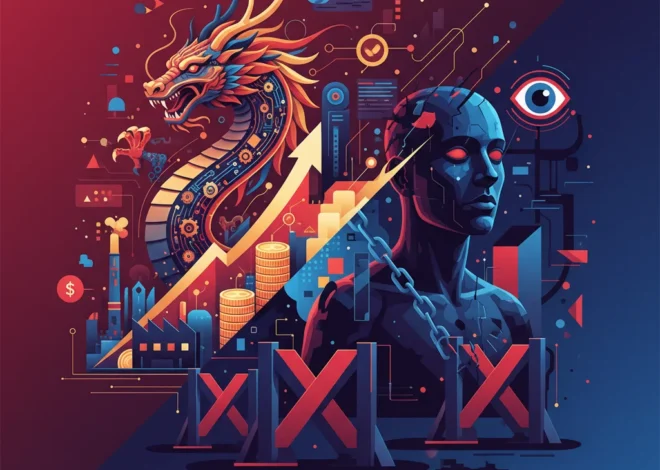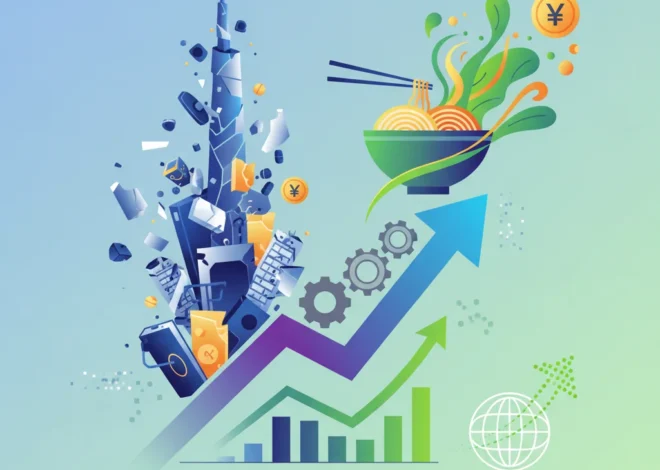
The Dragon’s New Roar: How an AI Breakthrough Sparked a Multi-Billion Dollar Rush into China’s Stock Market
For months, the prevailing narrative surrounding China’s economy has been one of caution. A property crisis, shifting regulations, and geopolitical headwinds had created a perfect storm, leading many international investors to pull back. But in the world of global finance, sentiment can turn on a dime. The catalyst? Not a government stimulus package or a central bank decision, but a technological breakthrough from a company many had never heard of: DeepSeek AI.
In a stunning reversal, foreign investors have poured back into China’s stock market, triggering the largest wave of overseas inflows in four years. This sudden stampede wasn’t driven by broad economic data, but by a single, powerful signal that China’s innovation engine is not just alive and well—it’s accelerating. This event underscores a new paradigm in modern investing, where breakthroughs in financial technology and artificial intelligence can outweigh traditional macroeconomic indicators in directing massive capital flows.
From Exodus to Enthusiasm: Charting the Dramatic Shift in Investor Sentiment
To appreciate the magnitude of this shift, one must understand the climate that preceded it. The past few years saw a steady outflow of foreign capital from Chinese equities. Concerns over Beijing’s regulatory crackdowns in the tech and education sectors, coupled with a deep-rooted crisis in the real estate market, painted a bleak picture. The CSI 300 Index, a key benchmark for mainland shares, had significantly underperformed its global peers, testing the patience of even the most steadfast bulls.
Then came the news of DeepSeek AI’s achievement. While the specific technical details are complex, the breakthrough represents a significant leap in large language model (LLM) capabilities, positioning the firm as a credible rival to Western giants like OpenAI and Google. For the global investment community, this was more than just a tech headline; it was a powerful counter-narrative. It suggested that despite the challenges, China possesses the talent, resources, and ambition to lead in the most critical technology of the 21st century. The impact on the stock market was immediate and profound.
The table below illustrates the stark contrast in market dynamics before and after the renewed focus on China’s tech prowess.
| Market Indicator | Previous Period (e.g., H2 2023) | Recent Period (Post-AI News) |
|---|---|---|
| Net Foreign Capital Flows | Consistent Net Outflows | Largest Net Inflows in 4 Years (source) |
| Key Index Performance (CSI 300) | Lagging Global Markets | Significant Rally & Renewed Momentum |
| Dominant Investor Narrative | Geopolitical Risk, Economic Slowdown | Tech Innovation, AI Leadership, Undervalued Assets |
| Sector Focus | Defensive / State-Owned Enterprises | Technology, Fintech, AI Supply Chain |
This data clearly shows a pivot from risk-off sentiment to a targeted, risk-on appetite for China’s technology and innovation sectors. The economics of the situation began to look different when viewed through the lens of AI-driven growth potential.
The Great Auto-Shift: Why a Shipping CEO's Warning Spells a New Era for Global Markets
The AI Catalyst: More Than Just Code
So, why does one company’s AI model have the power to move billions in the global stock market? The answer lies in what it represents for China’s broader economy and its place in the world.
1. A Proxy for National Innovation
DeepSeek AI’s success is seen as a testament to China’s indigenous innovation capabilities. In an era defined by a fierce tech rivalry between the US and China, particularly in semiconductors and AI, demonstrating world-class competence is a major geopolitical and economic victory. Investors see this not as an isolated event, but as proof that China can and will compete at the highest level, reducing its reliance on Western technology and creating its own ecosystems. This has massive implications for everything from banking and finance to manufacturing and logistics.
2. A New Engine for Economic Growth
The old drivers of China’s economy—real estate and low-cost manufacturing—are sputtering. Beijing and international investors alike have been desperately searching for the “next big thing” to power growth. Artificial intelligence is that narrative. A breakthrough like DeepSeek’s suggests a future where AI-driven productivity gains can re-energize the entire economy, creating new industries and efficiencies. This changes the long-term outlook and justifies higher valuations for the market as a whole.
3. The Fintech and Financial Technology Revolution
Advanced AI is the cornerstone of modern fintech. From high-frequency trading algorithms and sophisticated risk management models to personalized banking and fraud detection, AI is set to revolutionize the financial services industry. A leading domestic AI player like DeepSeek gives China a strategic advantage in building the next generation of financial technology, a sector ripe for explosive growth. This potential has not been lost on investors who specialize in the intersection of finance and tech. The recent inflows are partly a bet on China becoming a dominant force in AI-powered finance (source).
Decoding the Fed's Next Move: John Williams on Inflation, Rate Cuts, and the Future of the Economy
Implications for Global Investors and Business Leaders
This sudden shift in capital flows is more than just a story about China; it’s a lesson for anyone involved in the global economy. It highlights several key trends that investors and business leaders must now consider.
- Technology as a Primary Investment Driver: Geopolitics and macroeconomics still matter, but a company’s or a country’s technological prowess is becoming an increasingly dominant factor in investment decisions. The ability to innovate in critical fields like AI can create immense value and attract capital, even in the face of other headwinds.
- The Re-evaluation of Emerging Markets: For years, the “emerging markets” thesis was about demographics and industrialization. Now, it’s increasingly about technology adoption and innovation. Investors must now look beyond traditional metrics and assess a country’s digital infrastructure, talent pool, and R&D capabilities.
- Navigating Volatility in Trading: The speed at which sentiment shifted demonstrates the high-speed, narrative-driven nature of modern markets. Traders and portfolio managers need sophisticated tools and a deep understanding of non-financial catalysts (like tech breakthroughs) to navigate this environment successfully. The days of solely relying on quarterly earnings reports are over.
For business leaders, the message is clear: the pace of technological disruption is accelerating globally. A breakthrough in a lab in Beijing can alter the competitive landscape for a company in Berlin or Silicon Valley. Staying informed and agile is no longer a best practice; it is a survival imperative.
The Honesty Box Economy: An Unlikely Lesson in Trust for Modern Finance and Fintech
Conclusion: A New Chapter for China’s Market?
The return of foreign capital to China’s stock market, sparked by the flames of AI innovation, is a landmark event in post-pandemic global finance. It serves as a powerful reminder that narratives can change, and that in the 21st-century economy, technological strength is inextricably linked to financial strength. While significant risks and uncertainties remain, the DeepSeek AI breakthrough has single-handedly rewritten the short-term story for Chinese equities.
It has forced the world to look past the immediate challenges and consider the immense potential that lies within China’s burgeoning tech sector. Whether this marks the beginning of a sustainable bull run or simply a temporary tech-fueled rally remains to be seen. But one thing is certain: the intersection of AI, finance, and geopolitics has just become the most exciting and critical arena in the global stock market, and all eyes are once again on the Dragon.


